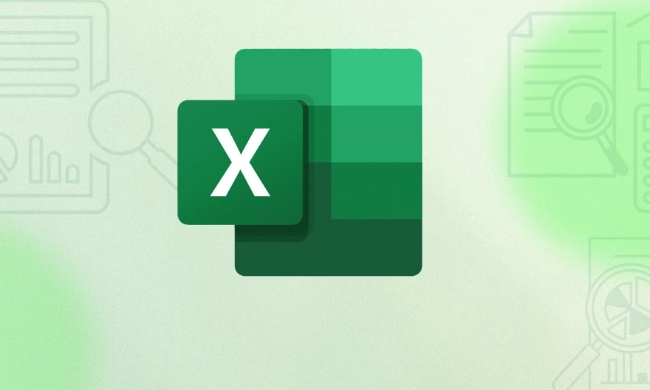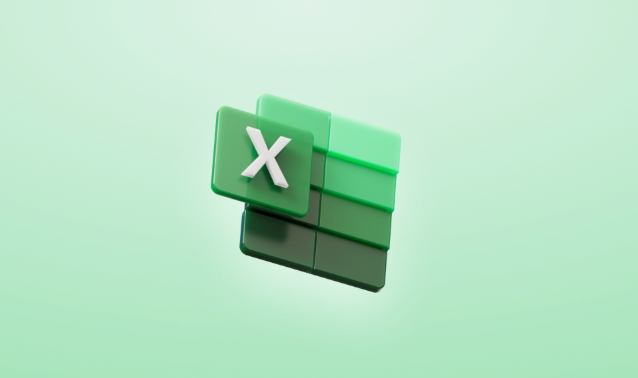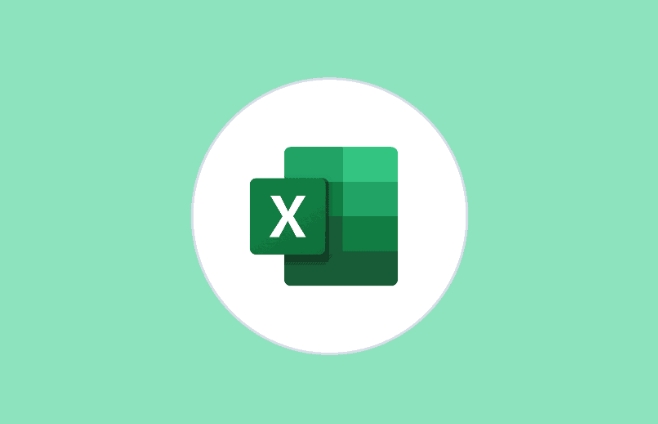Setting the printing area can control the printing content of the Excel worksheet. If not set, Excel may contain unwanted rows and columns or miss the required data. The manual setting method is: 1. Select the range of cells to be printed; 2. Go to the "Page Layout" tab; 3. Click "Print Area" and select "Set Print Area". If you need multiple printing areas: 1. Set the first area first; 2. Press and hold the Ctrl key to select other areas; 3. Set the printing area again. Each area will be printed as a separate section. The methods to clear or adjust are: 1. Click "Clear Print Area" to reset; 2. Reselect the range and set or edit the range through the Name Manager. Notes include: use the print preview to confirm the layout, update the print area after data changes, and save the template with the print area for reuse.

Setting a print area in Excel helps you control exactly which part of your worksheet gets printed. If you don't set it, Excel might include extra columns or rows you don't need—or worse, miss the data you do want. Here's how to set and manage print areas effectively.

How to Set a Print Area Manually
This is the most common method and works great when you only need one specific section printed.
- Highlight the range of cells you want to print.
- Go to the Page Layout tab.
- Click on Print Area , then choose Set Print Area .
That's all. Now when you go to print or use Print Preview, only that selected area will show up. It's helpful for reports or dashboards where you only want certain visuals or tables to print.

Setting Multiple Print Areas on One Sheet
If your sheet has separate blocks of data (like monthly summaries spread out), you can define more than one print area.
- First, select your initial range and set the print area as before.
- Then hold down the Ctrl key and select another range.
- Again, go to Page Layout > Print Area > Set Print Area .
Excel will remember both ranges. Just note: Each print area will print as a separate section—so they won't flow together on the same page. This is useful if you're printing multiple unrelated sections without creating separate sheets.

Clearing or Adjusting the Print Area
Sometimes you'll want to change or remove what's set. Here's how:
To clear the print area completely:
Go to Page Layout > Print Area > Clear Print Area .
This resets everything back to normal printing behavior.To adjust the current print area:
You can either redefine it by selecting a new range and repeating the “Set Print Area” step.
Or use Name Manager under the Formulas tab to edit the range directly (a bit advanced but handy if you're comfortable with formulas).
One thing to watch out for: When adjusting, make sure you're not accidentally adding ranges instead of replacing them.
Tips for Managing Print Areas Smoothly
Here are a few things people often overlook:
- Use Print Preview (under the File menu or Quick Access Toolbar) after setting your area to double-check layout.
- If you move or delete data, update your print area accordingly—it doesn't adjust automatically.
- Save templates with predefined print areas if you reuse formats often.
It's easy to forget about print settings until you're at the printer, so setting this up ahead of time saves frustration later.
Basically that's it.
The above is the detailed content of How to set print area in Excel. For more information, please follow other related articles on the PHP Chinese website!

Hot AI Tools

Undress AI Tool
Undress images for free

Undresser.AI Undress
AI-powered app for creating realistic nude photos

AI Clothes Remover
Online AI tool for removing clothes from photos.

Clothoff.io
AI clothes remover

Video Face Swap
Swap faces in any video effortlessly with our completely free AI face swap tool!

Hot Article

Hot Tools

Notepad++7.3.1
Easy-to-use and free code editor

SublimeText3 Chinese version
Chinese version, very easy to use

Zend Studio 13.0.1
Powerful PHP integrated development environment

Dreamweaver CS6
Visual web development tools

SublimeText3 Mac version
God-level code editing software (SublimeText3)

Hot Topics
 Why does Microsoft Teams use so much memory?
Jul 02, 2025 pm 02:10 PM
Why does Microsoft Teams use so much memory?
Jul 02, 2025 pm 02:10 PM
MicrosoftTeamsusesalotofmemoryprimarilybecauseitisbuiltonElectron,whichrunsmultipleChromium-basedprocessesfordifferentfeatureslikechat,videocalls,andbackgroundsyncing.1.Eachfunctionoperateslikeaseparatebrowsertab,increasingRAMusage.2.Videocallswithef
 5 New Microsoft Excel Features to Try in July 2025
Jul 02, 2025 am 03:02 AM
5 New Microsoft Excel Features to Try in July 2025
Jul 02, 2025 am 03:02 AM
Quick Links Let Copilot Determine Which Table to Manipu
 What is the meeting time limit for the free version of Teams?
Jul 04, 2025 am 01:11 AM
What is the meeting time limit for the free version of Teams?
Jul 04, 2025 am 01:11 AM
MicrosoftTeams’freeversionlimitsmeetingsto60minutes.1.Thisappliestomeetingswithexternalparticipantsorwithinanorganization.2.Thelimitdoesnotaffectinternalmeetingswhereallusersareunderthesameorganization.3.Workaroundsincludeendingandrestartingthemeetin
 how to group by month in excel pivot table
Jul 11, 2025 am 01:01 AM
how to group by month in excel pivot table
Jul 11, 2025 am 01:01 AM
Grouping by month in Excel Pivot Table requires you to make sure that the date is formatted correctly, then insert the Pivot Table and add the date field, and finally right-click the group to select "Month" aggregation. If you encounter problems, check whether it is a standard date format and the data range are reasonable, and adjust the number format to correctly display the month.
 How to use Microsoft Teams?
Jul 02, 2025 pm 02:17 PM
How to use Microsoft Teams?
Jul 02, 2025 pm 02:17 PM
Microsoft Teams is not complicated to use, you can get started by mastering the basic operations. To create a team, you can click the "Team" tab → "Join or Create Team" → "Create Team", fill in the information and invite members; when you receive an invitation, click the link to join. To create a new team, you can choose to be public or private. To exit the team, you can right-click to select "Leave Team". Daily communication can be initiated on the "Chat" tab, click the phone icon to make voice or video calls, and the meeting can be initiated through the "Conference" button on the chat interface. The channel is used for classified discussions, supports file upload, multi-person collaboration and version control. It is recommended to place important information in the channel file tab for reference.
 How to Fix AutoSave in Microsoft 365
Jul 07, 2025 pm 12:31 PM
How to Fix AutoSave in Microsoft 365
Jul 07, 2025 pm 12:31 PM
Quick Links Check the File's AutoSave Status
 How to change Outlook to dark theme (mode) and turn it off
Jul 12, 2025 am 09:30 AM
How to change Outlook to dark theme (mode) and turn it off
Jul 12, 2025 am 09:30 AM
The tutorial shows how to toggle light and dark mode in different Outlook applications, and how to keep a white reading pane in black theme. If you frequently work with your email late at night, Outlook dark mode can reduce eye strain and
 how to repeat header rows on every page when printing excel
Jul 09, 2025 am 02:24 AM
how to repeat header rows on every page when printing excel
Jul 09, 2025 am 02:24 AM
To set up the repeating headers per page when Excel prints, use the "Top Title Row" feature. Specific steps: 1. Open the Excel file and click the "Page Layout" tab; 2. Click the "Print Title" button; 3. Select "Top Title Line" in the pop-up window and select the line to be repeated (such as line 1); 4. Click "OK" to complete the settings. Notes include: only visible effects when printing preview or actual printing, avoid selecting too many title lines to affect the display of the text, different worksheets need to be set separately, ExcelOnline does not support this function, requires local version, Mac version operation is similar, but the interface is slightly different.






